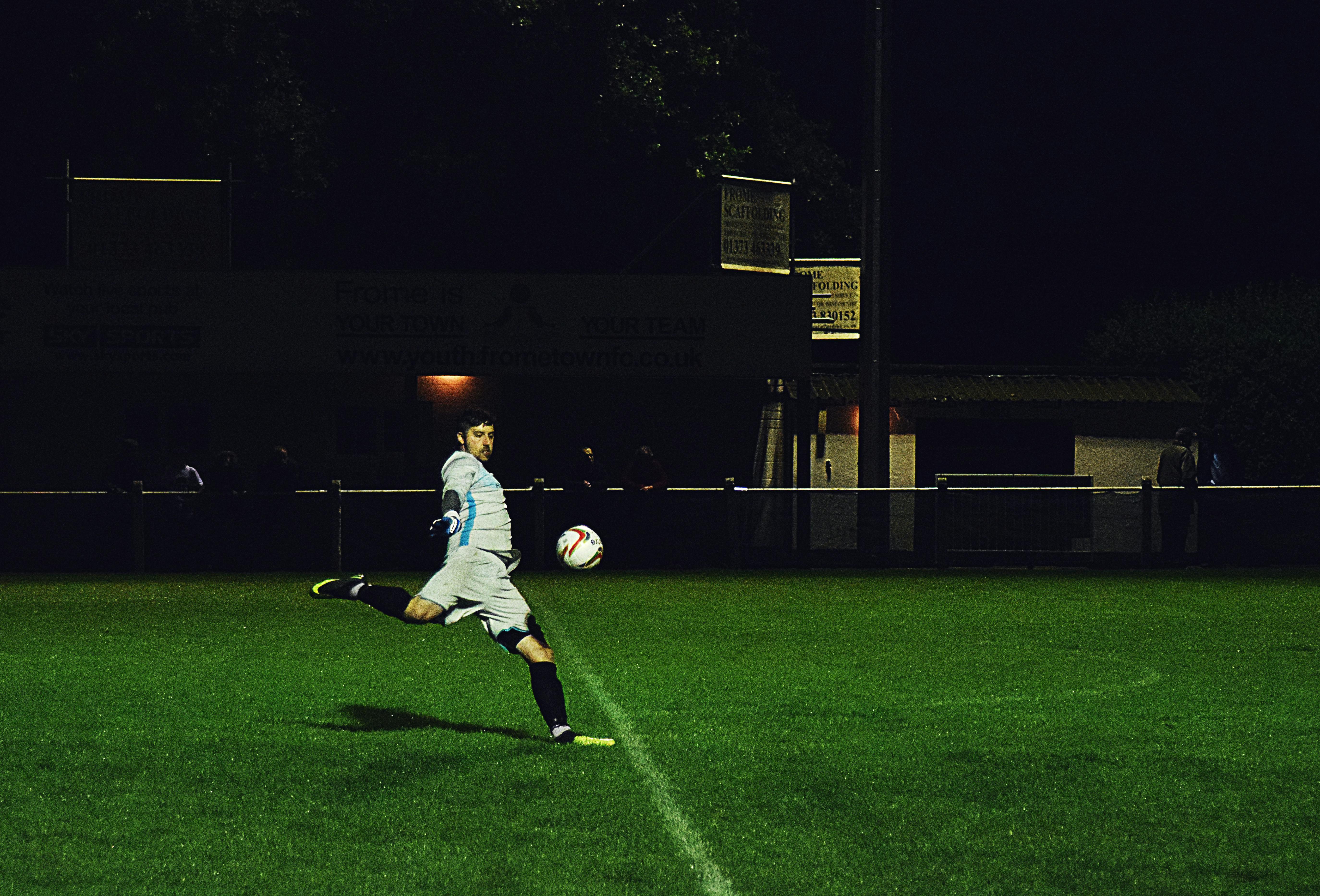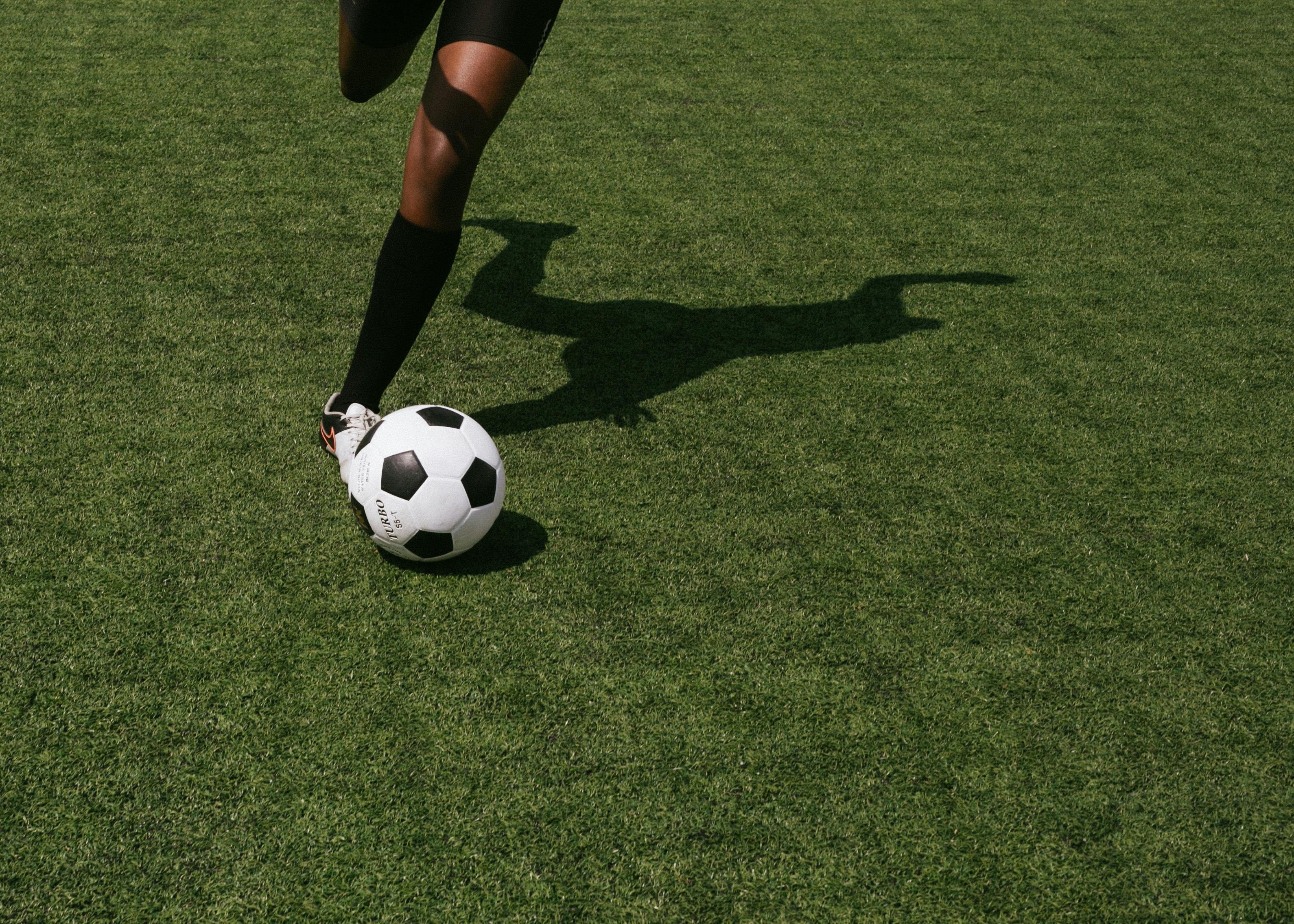Kicking a soccer ball is an essential skill for any soccer player. But how fast can a soccer ball be kicked? This article will provide an introduction to the mechanics of kicking a soccer ball and discuss the factors that affect how fast a soccer ball can be kicked. We’ll also look at some of the fastest recorded kicks in soccer history and compare these to the average speed of a professional player’s kick. Finally, we’ll explore some tips for improving your own kick speed.The speed at which a soccer ball can be kicked depends on the strength and technique of the kicker. Amateur kickers can typically kick a soccer ball at speeds between 40-50 mph, while professional players can kick a soccer ball at speeds up to 80 mph.
The Physics of Kicking a Soccer Ball
Kicking a soccer ball is an essential skill for any soccer player. Knowing how to kick a soccer ball correctly is key to making sure you have the power and accuracy behind your shots. The physics involved in kicking a soccer ball are complex, but understanding them can help you improve your game.
When kicking a soccer ball, the most important factor is momentum. Momentum is the product of mass and velocity. The more mass and velocity you have, the greater the momentum will be, resulting in more powerful kicks. To increase mass, you must increase the weight of your foot or leg to get more power behind your shot. To increase velocity, you must be able to move your foot quickly through the air so it can hit the ball with more force.
Angle of attack is also important when it comes to kicking a soccer ball correctly. The angle of attack is the angle at which your foot strikes the ball. It should be sharp and accurate so that all of your energy goes into pushing the ball in the direction you want it to go. If the angle of attack is too shallow or too steep, then some of your energy will be lost as drag or spin on the ball instead of going towards propelling it forward.
Another important factor when it comes to kicking a soccer ball is spin. Spin helps keep the trajectory of a shot straight and consistent by reducing air resistance on one side while increasing air resistance on another side of the ball. This helps counteract any wobbling motion that might occur due to wind or other external factors during flight. To achieve spin on your shots, you must rotate your foot in an outward motion just before striking it against the surface of the ball.
Finally, aim plays an important role in how successful any given kick may be. You must make sure that whatever direction you are aiming for with each kick is aligned with where you want it to go when it reaches its destination. A small miscalculation can make all difference between success and failure when shooting for goal!
Overall, understanding how physics affects kicking a soccer ball can help players improve their accuracy and power behind their shots. With practice and dedication, anyone can learn how to master this complex yet rewarding technique!
Factors Affecting the Speed of a Kicked Soccer Ball
The speed at which a soccer ball travels after being kicked depends on several factors. The strength of the kick, the angle of the kick, and the surface of the field all play an important role in determining how fast a soccer ball can travel. Additionally, certain physical characteristics of a soccer ball can also affect its speed.
The strength of the kick is one of the most important factors when considering how fast a ball will travel. The more force behind a kick, the further and faster it will go. Professional soccer players are able to generate tremendous amounts of power in their kicks which is why they are able to send balls flying across fields with great speed.
The angle at which a soccer ball is kicked also determines its speed and direction. A straight kick will send a ball traveling in a straight line, while a curved kick can cause it to move in an unpredictable manner. A more experienced player will be able to kick a ball with greater accuracy and control than someone who is less experienced.
The surface on which the soccer ball is kicked also affects its speed. Harder surfaces such as artificial turf tend to produce faster speeds than softer surfaces like grass or dirt. Additionally, windy conditions can also have an effect on how quickly a soccer ball moves after it has been kicked.
Finally, certain physical characteristics of a soccer ball can affect its speed as well. For instance, if a soccer ball is too light or too heavy it may not travel as far when kicked as one that has been properly inflated and weighted according to regulation standards. Additionally, if a soccer ball has smooth panels rather than textured ones it may be less likely to retain its momentum when kicked resulting in slower speeds overall.
In conclusion, there are several factors that affect how fast a kicked soccer ball travels including strength of the kick, angle of the kick, surface on which it is kicked, and physical characteristics such as weight and panel texture. By understanding these various elements and taking them into account when playing, one can improve their game and increase their chances for success on the field.
1. Choose the Right Size Soccer Ball
The size of a soccer ball can have a major impact on how fast it travels. Smaller balls are more aerodynamic and can travel faster than larger balls. For maximum speed, choose a size three or four ball with a circumference between 27 and 28 inches. This will provide the best combination of control and speed when kicking the ball.
2. Use the Instep of Your Foot
For longer distance kicks, use the instep of your foot to contact the ball. The instep provides more power and accuracy than other parts of your foot, so you can kick it faster and further. Place your foot slightly behind the center of the ball to make sure you make full contact with your instep.
3. Aim for the Bottom Half of The Ball
Aiming for the bottom half of the ball will help it travel faster and further. This is because when you hit below center, you create an upward trajectory which gives it more momentum as it travels towards its target. Make sure to keep your head down when making contact with the bottom half to ensure maximum accuracy.
4. Follow Through with Your Kicks
When kicking a soccer ball, make sure to follow through with your kick by extending your leg after making contact with the ball. This helps to add extra force behind your kick which will cause it to travel faster than if you just made contact without following through.
5. Use Your Hips When Kicking
Using your hips can help generate more power when kicking a soccer ball. Make sure to twist them as you make contact with the ball to add extra force behind your kick, allowing for increased speed as well as accuracy while shooting or passing.
Appropriate Technique for Kicking a Soccer Ball
Kicking a soccer ball is one of the most important skills in the game. In order to be successful at this skill, it is important to have an appropriate technique. The most important element of proper kicking technique is the position of the body and the foot. It is essential that the body is in an upright position, with the feet slightly wider than shoulder-width apart. The ball should be placed in front of the kicker, with the toes pointed towards it.
The next step is to raise your non-kicking foot up off of the ground and swing it back behind you in a circular motion. At this point, your kicking foot should be raised slightly off of the ground and pointed toward the ball. When you swing your non-kicking foot back, your kicking foot should come forward in a sweeping motion, making contact with the ball at its highest point. This will give you maximum power when striking the ball.
Once contact has been made with the ball, it is important to follow through with your kick and keep your eyes focused on where you want to send it. This will help ensure that you get maximum power and accuracy out of your kick. It is also important to keep your balance throughout this entire process so that you can maintain control over where you want to send the soccer ball.
Overall, proper kicking technique requires practice and repetition in order to master all elements of this skill. With practice and dedication, any soccer player can learn how to execute a powerful and accurate kick.

Strength and Flexibility Training for Kicking a Soccer Ball
One of the most important aspects of kicking a soccer ball is having the right balance of strength and flexibility. By focusing on both of these elements, players can learn to kick the ball in a way that maximizes their power and accuracy. Strength training is designed to develop the muscles used in kicking, while flexibility training helps to ensure that those same muscles are able to move through their full range of motion. When used together, these two approaches can help players reach their peak performance level.
Strength training for kicking a soccer ball should focus on developing the core muscles that provide stability, as well as those in the legs that generate power. Core exercises like planks, bridges, and crunches are great for building strength in this region, while squats, lunges, and step-ups can help target the lower body. For best results, use exercises that incorporate multiple muscle groups at once rather than isolating single muscle groups.
Flexibility training can also be beneficial for soccer players looking to improve their kicking ability. Stretches like calf raises and quad stretches will help to loosen up tight muscles in the lower body so they can move more freely during kicks. Additional flexibility exercises like yoga or Pilates can also be beneficial for improving overall range of motion in the hips and torso.
By combining both strength and flexibility training into their practice routine, soccer players can give themselves an edge on the field by improving their kicking technique and overall performance levels. With dedication and consistency, they will be able to reach new heights as an athlete.
The Benefits of Learning Proper Technique for Kicking a Soccer Ball
Kicking a soccer ball correctly can be a difficult skill to master. Learning the proper technique for kicking a soccer ball is essential for any player who wants to improve their performance on the field. A good kicking technique helps players to accurately shoot and pass the ball, as well as avoid injuries caused by incorrect kicking mechanics. Here are some of the benefits of learning proper technique for kicking a soccer ball:
Improved Accuracy – The main benefit of learning how to kick a soccer ball properly is improved accuracy. This means that players will be able to aim their shots and passes more effectively, resulting in better chances of scoring goals or assisting teammates. By practicing proper kicking techniques, players can also develop better foot-eye coordination, which is important when playing at higher levels.
Increased Power – Power is an important part of shooting and passing in soccer, and proper form will help players generate more force behind their kicks. This increased power will help them shoot from farther distances and make stronger passes that are difficult for opponents to intercept. Additionally, having strong kicks makes it easier for players to challenge opponents on 50-50 balls or clear the ball out of danger during defensive situations.
Reduced Risk of Injury – Incorrectly kicking a soccer ball increases the risk of injury for players since it puts unnecessary strain on their muscles and joints. When done correctly, however, kicking a soccer ball with proper technique can help reduce the risk of injuries caused by fatigue or overexertion. It also helps players maintain balance while making contact with the ball and avoids any sudden movements that could injure them or their opponents while playing competitively.
Learning proper technique for kicking a soccer ball can help players improve their game performance while reducing their risk of injury on the field. Whether it’s shooting or passing, mastering this skill can give any player an edge over their opponents and take their game to the next level.
Effects of Weather Conditions on the Speed of a Kicked Soccer Ball
The speed of a soccer ball when it is kicked depends on many factors, including the skill and strength of the kicker, as well as the type of pitch and ball used. However, weather conditions can also play a role in how fast a soccer ball travels when it is kicked. Wind, humidity, and temperature are all elements that can affect the speed at which a soccer ball moves when it is kicked.
Wind can cause the soccer ball to move faster or slower depending on its direction. If there is strong wind blowing in the same direction as the ball has been kicked, then this will help to push it along faster than usual. On the other hand, if there is strong wind blowing against the direction of travel, then this will slow down the speed at which the soccer ball moves.
Humidity can also have an effect on how fast a soccer ball moves when it is kicked. High levels of humidity can cause air resistance to increase, which will reduce the speed at which a soccer ball moves through it. This means that if there is high humidity present during a game then players may find that their kicks do not travel as far or as fast as they normally would.
Temperature can also affect how fast a soccer ball moves when it is kicked. When temperatures are colder, air becomes more dense and this increases air resistance which slows down how quickly a soccer ball travels through it. Conversely, when temperatures are warmer, air becomes less dense and this reduces air resistance allowing for faster movement of the soccer ball.
In conclusion, weather conditions including wind direction, humidity levels and temperature all have an effect on how quickly a soccer ball travels when it is kicked. By taking these factors into account players can better gauge how far their kicks will travel during games and plan accordingly.

Conclusion
The answer to the question of how fast a soccer ball can be kicked depends on the skill of the kicker and conditions such as the surface of the playing field. The speed of a soccer ball can range from 50 miles per hour to more than 80 miles per hour. The overall force and power behind a kick are also important factors when determining how fast a soccer ball can be kicked.
In general, professional soccer players are able to kick a soccer ball at speeds greater than non-professionals. Professional players usually have greater control over their bodies and their kicking technique, allowing them to generate more power and speed when kicking a soccer ball.
It is also important to note that different surfaces can affect how quickly a soccer ball travels when it is kicked. A harder surface will generally result in faster travel speeds while softer surfaces will slow down the speed of the soccer ball.
Overall, it is clear that there is no single answer to the question of how fast a soccer ball can be kicked as many factors come into play when determining how quickly a soccer ball will travel.
By taking into consideration different variables such as skill level, kicking technique, and surface type, it is possible for anyone to determine roughly how fast they are able to kick a soccer ball.




